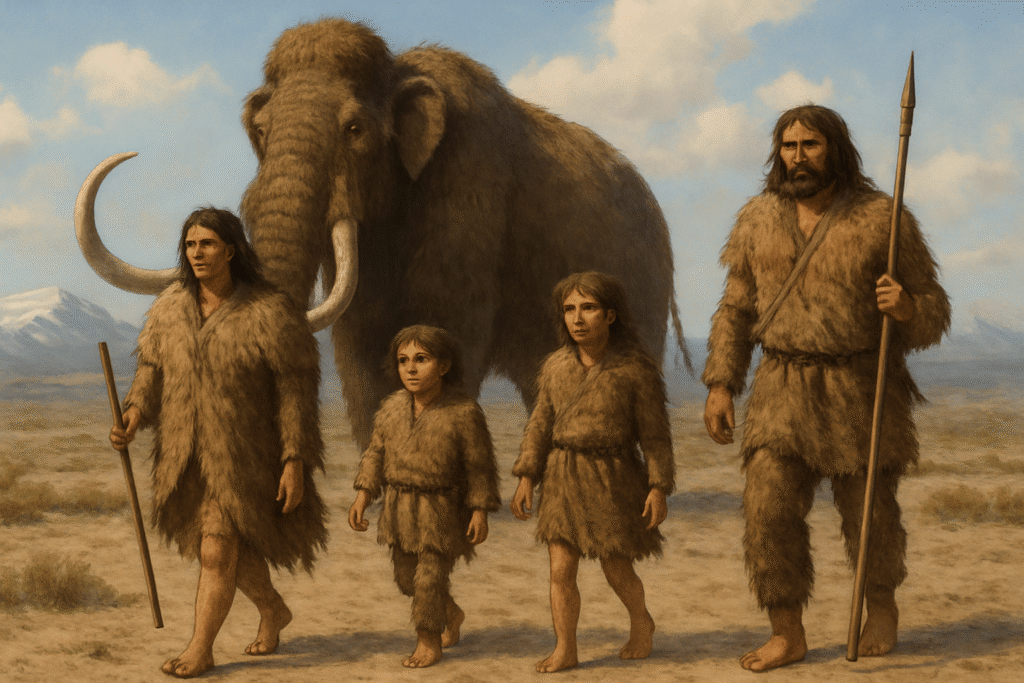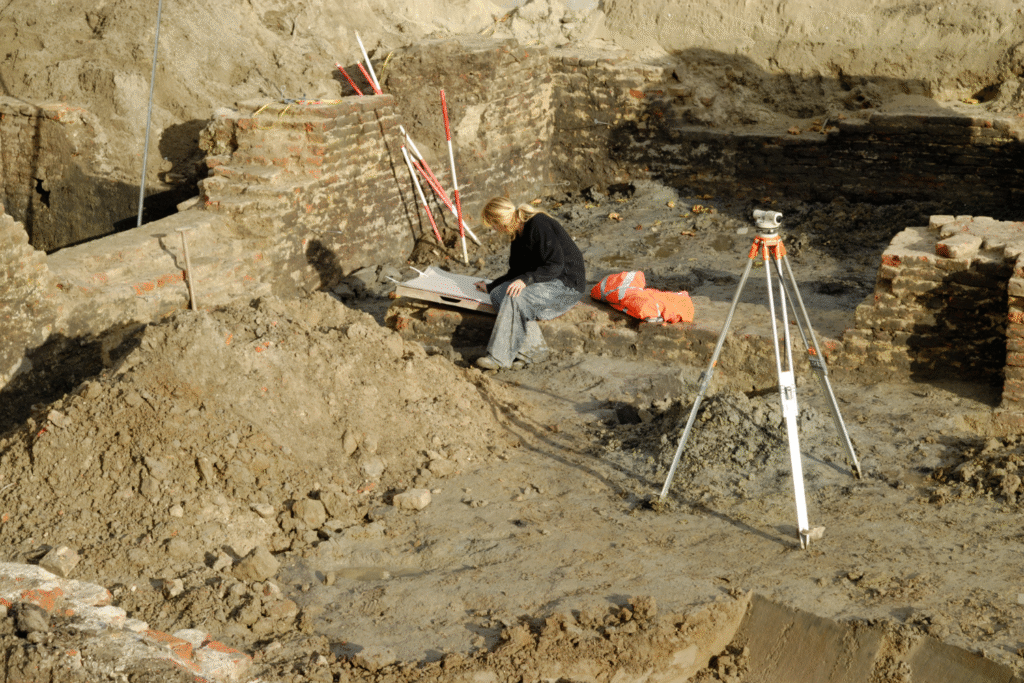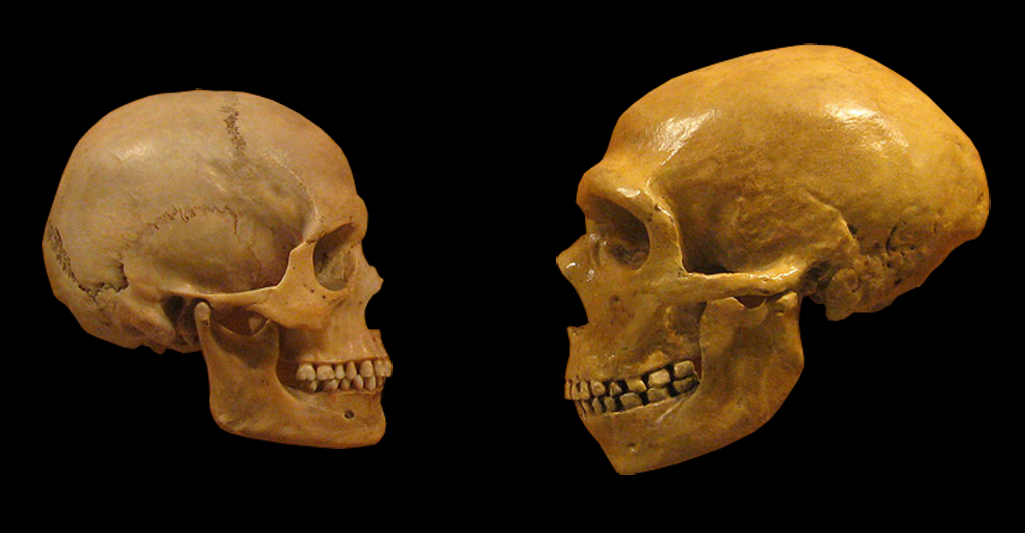A remarkable fossil rewrites early human ancestry.

An extraordinary discovery has emerged from Skhul Cave on Mount Carmel in northern Israel, where a child’s remains, dated to about 140,000 years ago, show an unexpected blend of anatomical traits. While most ancient fossils clearly belong to one human species or another, this one appears to carry features of both modern humans and their archaic relatives, suggesting a hybrid origin. As scientists revisit its CT scans and three-dimensional models, this find invites us to rethink how early human groups met, mingled and sometimes merged in ways far richer than we realised.
1. Researchers found skull features that combine human and Neanderthal traits.

Scientists used CT scans and 3D modeling to re-examine a child’s skull dated at about 140,000 years old from a site in Israel. They discovered that the neurocranium resembled that of modern humans, while the jaw and mid-face were more similar to Neanderthal structure, reported by Smithsonian Magazine. Such a mosaic of traits on a single individual is rare and suggests more direct interaction between the two groups than previously thought.
The significance of finding a child with mixed anatomical markers lies in what it implies about early human encounters. If a young individual shows this blend of features then the populations living in that region were likely mingling, interbreeding or sharing communities in complex ways. This pushes us to consider that human evolution was not simply one species replacing another, but rather a shifting network of relationships and gene flow.
2. Dating evidence shows interaction between human groups much earlier than expected.

Recent analysis of the fossil’s context places the child around 140,000 years ago, which is far older than most models predicted for human-Neanderthal hybridization according to AP News. This much earlier timeframe means the window for interbreeding and interaction extends further into prehistory than textbooks often suggest. The research team’s work on the jaw and ear region offered key clues that triggered this re-thinking of ancient timelines.
When we allow that different human groups overlapped and likely exchanged genes at such early dates it changes how we view migrations, cultural exchange and adaptation. The landscape of early human evolution becomes less linear and more interconnected. Instead of one group replacing another, we might imagine populations meeting, adapting and forming hybrid descendants in multiple places over long stretches of time.
3. Genetic proof remains elusive but anatomical evidence is strong.

While the child’s anatomy strongly indicates hybrid origins, researchers have so far been unable to extract viable ancient DNA from the remains, as stated by Live Science. Without genetic confirmation the case cannot be fully settled, yet the detailed bone studies point to a consistent pattern of mixed traits. The absence of DNA does not prevent the fossil from stirring major discussion about human evolution and species boundaries.
Scientists are adapting their methods to cope with DNA degradation and hope future work might retrieve genetic material. Until then, the skull’s anatomy remains a powerful piece of evidence. It invites further fossil searches in the region and makes scientists more alert to finding similar mixed-feature remains elsewhere. This moment deepens our curiosity about who our ancestors were, how they moved and how they met.
4. The burial context suggests social belonging despite hybrid anatomy.

Excavation at the child’s site showed that the remains were found in a deliberate burial, indicating that the community took care in placing the body, suggesting recognition and social value. At a time when humans and archaic human groups were interacting, such cultural behaviour hints that belonging may not have been based strictly on species purity but on social connections or shared identity. The community evidently accepted the child as part of their group.
This finding adds emotional weight to the biological story because it shows that the individual was not treated as an outsider. Instead of being isolated or discarded, the child lay in a respected burial-place. We see cultural ritual at work, meaning ancient humans valued children regardless of origin, and their definitions of community may have been more inclusive than we assume today.
5. New imaging technology revealed subtle hybrid markers missed earlier.

The skull in question had been known to scientists for decades but it is only now that high resolution CT scans and 3D reconstructions have drawn out features previously invisible. The modern imaging allowed researchers to see bone curvature, inner ear shape and jaw attachment details that revealed the hybrid pattern. Old assessments treated the skull as simply early modern human, but with richer imaging the hybrid interpretation becomes far stronger.
Technology is reshaping how we interpret fossils by offering increasingly fine detail about anatomical nuance. Features once dismissed as variation might now signal deeper ancestry complexities. For the layperson this means archaeology is not static but constantly refined. Each new tool potentially unlocks fresh insight from old fossils, reminding us that discoveries may sit waiting in museum collections.
6. The find challenges rigid human species boundaries in ancient times.

For much of modern anthropology the categories of Homo sapiens, Neanderthal and other hominins were treated as largely separate. This child’s mixed anatomy weakens that division by showing that two groups once interacted in intimate and complex ways. The notion of discrete species living in isolation becomes less persuasive when physical evidence tells of hybrids, shared traits and overlapping populations. Early humans clearly inhabited a fluid evolutionary landscape.
Accepting that boundaries between groups were porous changes how we think about evolution, migration and identity. Instead of seeing modern humans as pure or entirely distinct, we begin to imagine tangled ancestries and shared cultural legacies. That perspective invites us to re-examine how identity, family and survival worked in deep prehistory, and it opens the door to richer, more interconnected stories of our ancient past.
7. Hybrid individuals may have been more common than the fossil record shows.

This child might not be unique. With fossil evidence now pointing to mixing, researchers are revisiting other finds that show unusual anatomical blends. Populations that once seemed uniform may have contained numerous hybrid individuals whose features were dismissed as variation rather than ancestry mixtures. As investigations expand, the number of recognized hybrids may rise.
The possibility of widespread hybridization invites a revisiting of human ancestry and population structure. It suggests that gene flow, cultural exchange and shared habitats were the rule rather than the exception. For everyday readers the implication is profound: our evolutionary history may resemble a tapestry of interaction rather than isolated branches. The hidden story of human ancestry becomes richer and more diverse.
8. Modern genetic studies support ancient interbreeding conclusions.

Genetic sequencing of modern humans reveals that many people carry small percentages of Neanderthal DNA or traces of other archaic human groups. These findings align with fossil evidence like this child’s anatomy and strengthen the case for interbreeding. While the child’s DNA was not recovered, the broader genetic landscape supports the theory that ancient populations mixed genetically and culturally.
When we link fossil remains with modern genetics we gain a fuller picture of how ancient interactions shaped us today. Traits passed down, however subtly, may affect everything from immunity to physiology. This discovery offers readers a direct connection between deep ancient history and their own biology. It underlines that we are all products of long forgotten interactions.
9. Cultural and biological legacies from hybrids still influence humans today.

The life of this child hints that ancient humans did not just exchange genes—they also shared ideas, tools and social practices. Hybrid individuals may have bridged communities, facilitated cultural exchange and helped blend traditions of different human populations. Their existence suggests that gene flow and cultural flow moved together. Communities connected across groups, shared beliefs and raised children who carried multiple heritages.
Recognizing this helps us appreciate how adaptable and interconnected early human societies were. It also invites reflection on how our own identities and cultures are built upon layers of ancient mixing, both biological and social. The hybrid legacy lives on not just in our genomes but in the way humans relate, adapt and evolve together.
10. Future research promises to rewrite human history again.

Ongoing efforts to apply newer imaging techniques, search for ancient DNA in difficult-to-reach remains and uncover more hybrid individuals will likely lead to more revisions in our understanding of early human evolution. This child’s discovery is not the ending of a story but the opening of a new chapter in which science continuously refines the narrative. For curious readers the excitement comes from knowing that our story is not complete and may be far more varied than we ever imagined.
As more fossils are scanned and more data is analyzed, researchers expect to reveal deeper layers of human ancestry, greater complexity of interaction and unexpected connections between ancient populations. That means even fields we thought settled may still hold surprises. It’s a reminder that the story of humanity always evolves, just like the species it describes.
